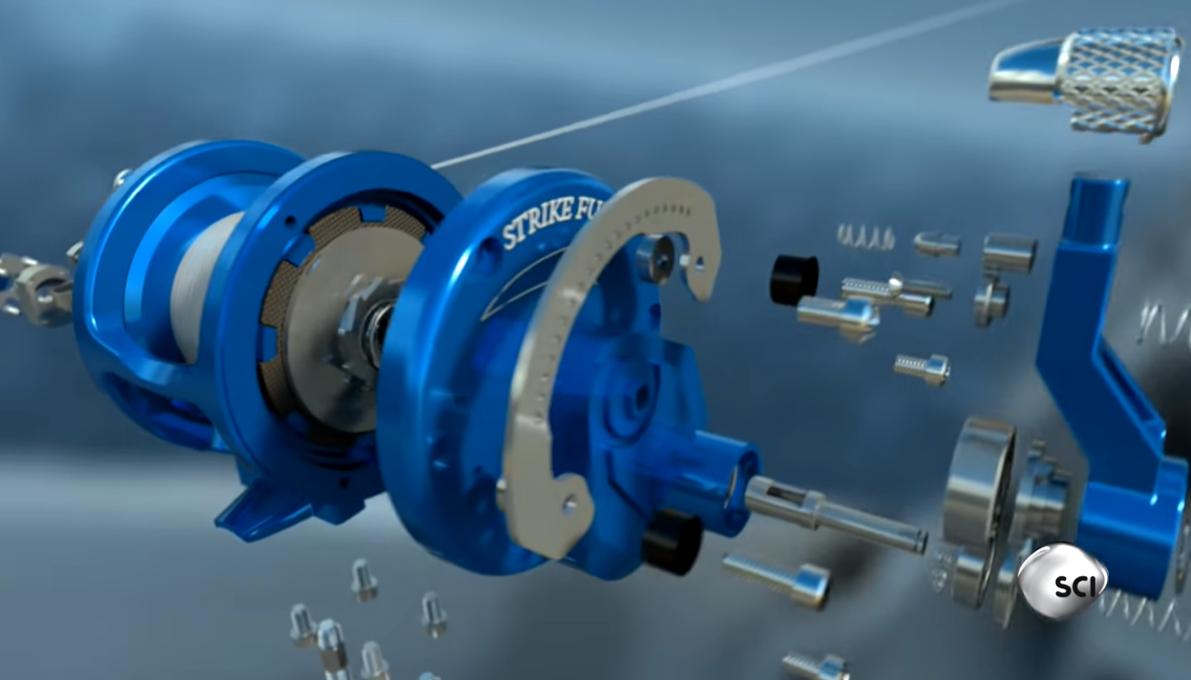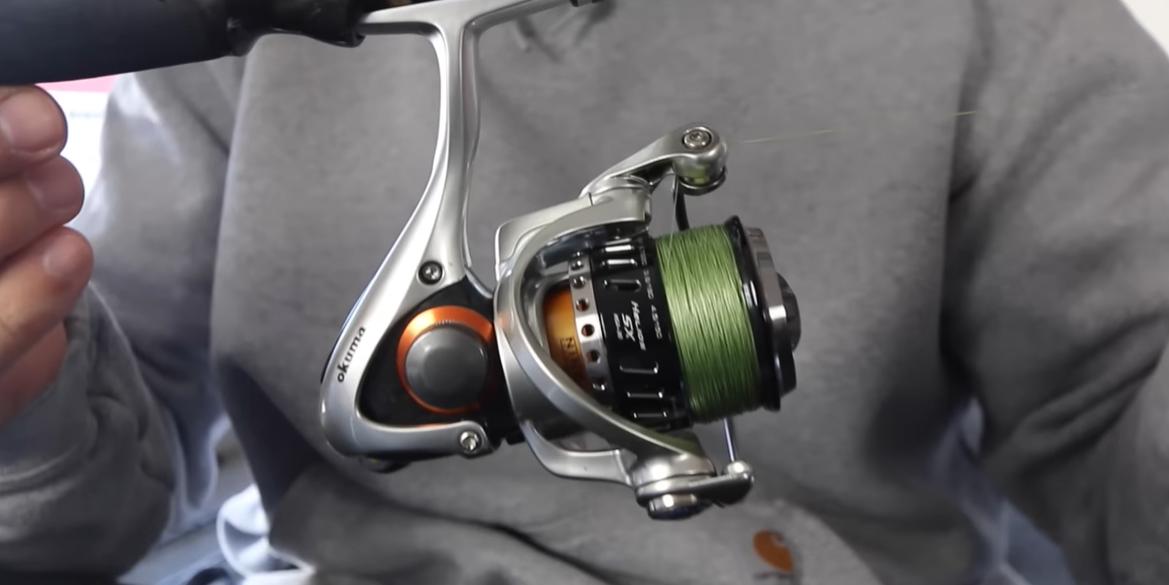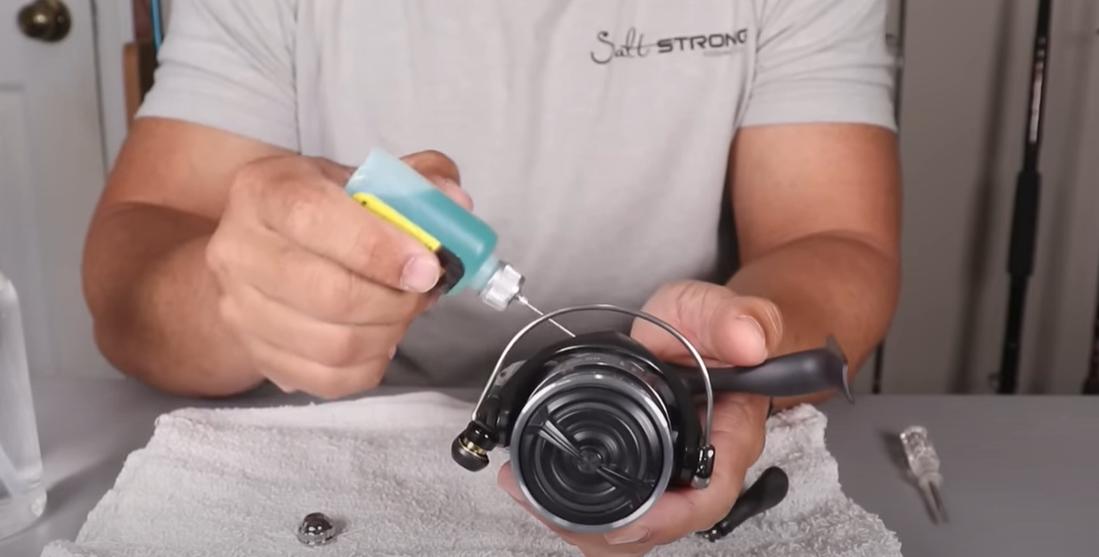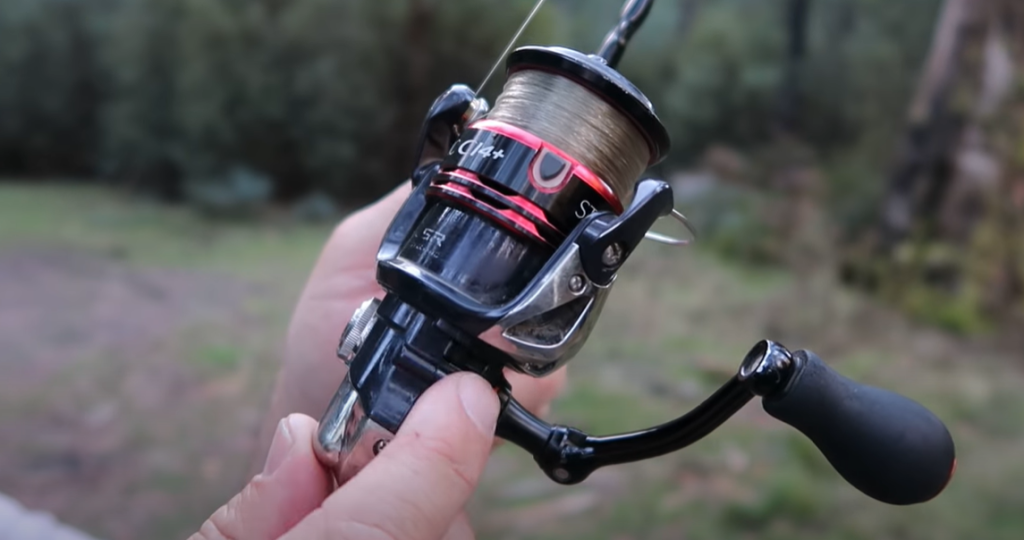Your spinning reel might be going backward due to a disengaged or faulty anti-reverse mechanism. A setting error or wear can cause this issue.
A spinning reel that slips in reverse can quickly turn an exciting fishing trip into a frustrating ordeal. Whether you’re a seasoned angler or a novice, understanding the mechanics of your equipment is crucial for a successful and enjoyable experience.
The anti-reverse feature on a spinning reel prevents the handle from turning backward, ensuring a solid hookset and control over the line. When this function fails, it’s often a simple matter of adjusting the anti-reverse switch found on the bottom or the back of the reel. If adjusting the switch does not solve the problem, it may indicate wear or damage within the reel that requires maintenance or repair. Regular checks and proper care ensure the longevity and reliability of your fishing gear, keeping those reels turning smoothly in the right direction. Let’s check Why is My Spinning Reel Going Backwards.

Understanding Spinning Reel Backward Movement
Experiencing your spinning reel moving in the wrong direction can be a perplexing issue, often leading to interrupted casts and frustrating outings. Understanding the mechanics behind spinning reel backward movement is crucial for both novice and seasoned anglers. In the sections below, we dissect this common anomaly, exploring causes, consequences, and swift resolutions to reinstate the proper function of your reel.
The reverse function of a spinning reel often perplexes anglers, but its purpose is fundamental. It’s the anti-reverse mechanism that prevents the reel from spinning backward. This feature serves to lock the reel when you’re not retrieving the line, keeping your catch securely in place.
To prevent your spinning reel from going backward, the anti-reverse function is pivotal. It’s usually engaged automatically, but some reels offer a switch to toggle this feature. Properly maintaining this mechanism ensures smooth operation and prevents dreaded backlashes, especially when fighting a fish.
The anti-reverse works in conjunction with the drag system, providing anglers the ability to control the line’s tension during a fight. Lifting and lowering the rod tip influence the anti-reverse, aiding in managing the pressure exerted on the fish.
Knowing when to utilize the anti-reverse is key. While fixing a broken anti-reverse might seem daunting, numerous guides on platforms like YouTube offer DIY solutions, making repairs accessible for anglers at any level.
Common Issues With Spinning Reels
Spinning reels are lauded for their versatility and ease of use, but they’re not immune to mechanical problems. Issues arise from wear and tear, improper use, or a lack of maintenance. Some common culprits of backward movement in spinning reels include:
- Damaged or worn-out anti-reverse bearing
- Incorrectly assembled gears post-maintenance
- Debris caught in moving parts
- Over-lubrication or lack of lubrication
Unintentional Backward Movement
Unintentional backward movement of your spinning reel during use is more than just an annoyance; it indicates a potential failure in the reel’s anti-reverse system. This integral feature prevents the reel from spinning backward and ensures that the hook sets firmly when a fish bites. Ignoring these signs can result in:
- Lost catches due to failed hook sets
- Increased line wear and potential breakages
- Difficulty in maintaining control over the reel and line tension
Impact On Fishing Experience
The backward movement of a spinning reel can significantly diminish the overall fishing experience. You might face:
- Interruptions in the smoothness of line retrieval
- Frustration and wasted time during critical fishing moments
- Potential damage to the reel and the loss of the day’s catch
Importance Of Addressing The Issue Promptly
It’s essential to address spinning reel issues promptly to maintain the reel’s longevity and performance. Timely intervention can prevent the problem from escalating, saving you from unnecessary expenditures in the long run. Consider the following steps:
| Immediate Action | Long-Term Solution |
|---|---|
| Check the anti-reverse switch | Regular cleaning and maintenance |
| Inspect for visible damage or misalignment | Periodic professional servicing |
| Eliminate any dirt or debris | Replacement of worn-out parts |
Internal Mechanism Analysis
Understanding why your spinning reel might engage in the unintentional acrobatics of spinning backward begins with peering into its complex internals. Let’s dissect each component, enquire how they interact instinctively to enable a seamless fishing experience, and unveil the enigmas that may cause this backward ballet. Sifting through the mechanical entrails, one can troubleshoot and resolve potential issues that hinder the optimal performance of your spinning reel.

Detailed Breakdown Of Spinning Reel Components
Every angler knows that a spinning reel’s prowess lies in the myriad of parts quietly working in harmony. Key among them:
- Gear system: The conductor of force from the handle to the spool.
- Bearing assembly: Ensures smooth operations and support to the moving parts.
- Spool: The storage drum for the fishing line.
- Drag system: Controls the resistance applied to a fish-pulling line.
- Handle: Your direct influence on the reel, governing retrieve and control.
- Anti-reverse mechanism: Prevents unintended rearward revolutions.
Spool And Drag System Interaction
The spool and drag system forms a dynamic duo that maintains your line’s tension and the finesse of your cast. A well-oiled collaboration between these two allows for:
- Precise casting: Synchronized letting out of the line.
- Control during retrieve: Adjusting drag for optimal reeling in.
When the collaboration falters, so does the reliability of your casts and retrieves.
Handle And Anti-reverse Mechanism
The handle and the anti-reverse feature work in concert to ensure the line unwinds only when you want it to. The role of the anti-reverse is crystal clear:
- Halting the handle (and hence the spool) from moving backward.
- Providing the angler with the power to battle fish without gear backlash.
If this tandem faces issues, unscripted reverse motion may occur, leading to lost catches and frustrating trips.
Potential Causes Of Backward Motion

The unwelcome surprise of a spinning reel going backward typically stems from a handful of culprits:
- Worn out anti-reverse: The arrestor of backpedaling worn down through use or damage.
- Improperly set drag: Too much pressure or a slip in the system leads to loss of line control.
- Misalignment of gears: Wear and tear or impact causing gear teeth misadventure.
- Debris within the mechanism: Grime, salt, or sand intruding and disrupting smooth gear function.
Unearth these disruptions early and your reel will serve faithfully, without an unexpected twist in the tale.
Troubleshooting Steps
If you’ve ever been out fishing and suddenly found your spinning reel unwinding in the wrong direction, you’re not alone. This issue can disrupt a peaceful day on the water and result in lost time and fish. But there’s good news: with a few troubleshooting steps, this annoying problem is often quickly fixable. By understanding the mechanics of your spinning reel and taking a methodical approach, you can address the issue and get back to casting in no time. Below are essential steps to take when your spinning reel begins to operate backward.
Checking For Spool Tension And Line Lay
The first step in troubleshooting your spinning reel is to check the spool tension and how the line is laid on the reel. Here are the specific aspects to look for:
- Spool Tension: Ensure that the spool is neither too tight nor too loose.
- Line Lay: Observe the line distribution across the spool; uneven line lay can cause issues.
Tips To Adjust Spool Tension
Adjusting the spool tension is straightforward. Follow these tips:
- Locate the spool tension knob on your spinning reel.
- Turn the knob clockwise to increase tension, counterclockwise to decrease tension.
- After adjustments, test the reel to ensure the tension is appropriate for smooth operation.
Proper Line Lay Techniques
A correctly laid line is critical for optimal reel performance. Here are some proper line lay techniques:
- Ensure the line feeds off the spool in the same way it goes onto the reel to prevent twists.
- Keep appropriate tension on the line when winding onto the spool to maintain an even line lay.
- Do not overfill the spool; stop at about 1/8 inch from the spool’s rim for best results.
Inspection Of Handle And Anti-reverse Switch
Last but not least, inspect both the handle and the anti-reverse switch:
| Component | Action | Expected Outcome |
|---|---|---|
| Handle | Make sure it is securely fastened | No slipping when reeling |
| Anti-Reverse Switch | Check if it is on or off | Prevent backward winding when engaged |
In some cases, simply flipping the anti-reverse switch to the correct position may resolve the issue. If these steps don’t fix the problem, it may be time to consult a professional or consider servicing your reel.
Maintenance And Prevention
Experiencing your spinning reel going backward can be a frustrating issue for any angler. This problem not only affects the performance of your fishing gear but can also lead to missed catches and a less enjoyable fishing experience. The key to a smoothly operating spinning reel often lies in proper maintenance and preventive care. Properly maintaining your spinning reel ensures durability, and optimal performance, and can prevent the annoyance of reverse movement during use.
Importance Of Regular Maintenance
Keeping up with regular maintenance on your spinning reel is paramount. It not only extends the life of your fishing gear but also ensures that it performs as expected during those critical fishing moments. A well-maintained spinning reel should have a seamless drag, consistent handle movement, and a reliable bail operation. Without regular check-ups, debris, and wear-and-tear can lead to the dreaded backward movement of the reel, disrupting your fishing experience.
Lubrication And Cleaning Guidelines

Lubrication and cleaning are central components of spinning reel maintenance. Here’s a concise guideline to follow:
- Disassemble your reel carefully and lay out all parts.
- Clean each component with the appropriate cleaner. Avoid harsh chemicals that can damage gear materials.
- Inspect for any signs of wear or damage. Look out for bent parts or those that have become rough and might cause snags.
- Lubricate moving parts lightly with reel oil, avoiding excess which can attract debris.
- Reassemble your reel, making sure all parts are secure and moving freely.
Preventive Measures For Avoiding Reverse Movement
To prevent the backward movement of your spinning reel, consider these preventive measures:
- Inspect the anti-reverse mechanism regularly for signs of wear or damage.
- Engage the anti-reverse switch properly before use.
- Ensure that the main gear and pinion are aligned and functioning without obstruction.
- Avoid dropping the reel or handling it roughly to prevent internal damage.
Professional Servicing Recommendations
While regular home maintenance is crucial, it’s also recommended to have your spinning reel professionally serviced periodically. Expert technicians can provide an in-depth cleaning, spot potential issues before they become problematic, and ensure that your reel is in top-notch condition. Taking your reel in for professional maintenance once a year, especially if you fish frequently, is a wise investment for its longevity and reliability.
Advanced Techniques And Considerations
Encountering a spinning reel that goes backward can disrupt an otherwise successful day of fishing. Thankfully, anglers desiring a flawless performance from their reels can employ many advanced techniques and considerations. Let’s Probe into these sophisticated practices to ensure your fishing expeditions are free of unexpected reverse motions.
Enhancing Anti-reverse System Functionality
A crucial step for mitigating backward reel movement involves enhancing the anti-reverse system. This mechanism is designed to prevent the reel handle from spinning in the opposite direction, which can cause tangles and reduce your ability to set the hook properly.
- Inspect the anti-reverse bearing or lever to ensure it’s engaged and in good working order.
- Clean the anti-reverse mechanism regularly to remove grime and prevent mechanical failure.
- Consider replacing worn-out parts with high-quality components for a more effective anti-reverse system.
Upgrading Handle And Drag Components
Upgrading the handle and drag components of your spinning reel can significantly improve performance and prevent reverse motion. Superior handle and drag components translate into smoother operation and better control, directly impacting your reel’s efficiency.
- Install a power handle for increased leverage and easier reeling under load.
- Upgrade to a high-performance drag system that offers precise adjustments and reliable stopping power.
- Ensure all connections are secure and that the handle is firmly attached to minimize slack that could contribute to reverse motion.
Customization Options For Preventing Reverse Motion
Customization is a powerful tool in the angler’s arsenal. Making tailored adjustments to your reel can banish the frustration of backward movement.
| Customization Feature | Benefit |
|---|---|
| Magnetic brakes | Provides finer control over spool speed and tension to counter reverse motion. |
| Upgraded gear ratios | Faster retrievals with less chance for the handle to move backward under pressure. |
| Anti-reverse switches | Enable on-the-fly engagement or disengagement of the anti-reverse for increased control. |
Integrating Modern Technology For Reel Maintenance
Integrating modern technology into your reel maintenance routine can prevent reverse motion and extend the longevity of your equipment. Technological advancements deliver proactive ways to keep your reel in top condition.
- Utilize digital tools or apps to track maintenance schedules and remind you when it’s time to service your reel.
- Invest in precision tools designed for reels to provide accurate adjustments and repairs.
- Explore intelligent reel systems that feature built-in sensors to monitor performance and alert you to potential issues before they arise.
Frequently Asked Questions For Why Is My Spinning Reel Going Backwards
Why Does My Spinning Reel Rewind?
A common cause is an incorrect spooling of the line, resulting in line twists. Ensure the line feeds onto the reel spool in the same direction it comes off the product spool. Regular maintenance and proper line spooling can prevent this issue.
Can Drag Settings Affect Reel Direction?
Yes, if the drag system is set overly loose, it can’t apply enough resistance. This can cause the reel to seem like it’s moving backward. Adjusting the drag to a tighter setting should remedy slippage issues that give this impression.
Are There Common Fixes For Reel Back-spinning?
Tightening the reel’s anti-reverse switch is a primary fix. If this fails, lubricating the gears and checking for worn-out parts can assist. Consult the manual for specific troubleshooting related to your reel model.
What Causes Spinning Reel Handle Backplay?
Handleback play is often due to a worn-out or disengaged anti-reverse bearing. Inspect and replace the bearing if needed. Proper maintenance ensures smooth reel operation and minimizes handle play.
Conclusion
Understanding your spinning reel’s reverse movement can save you time and frustration on the water. Proper maintenance and setup are crucial. Accept these tips to enhance your fishing experience. For more guidance, explore our detailed articles on reel care. Keep casting; the next big catch awaits!

